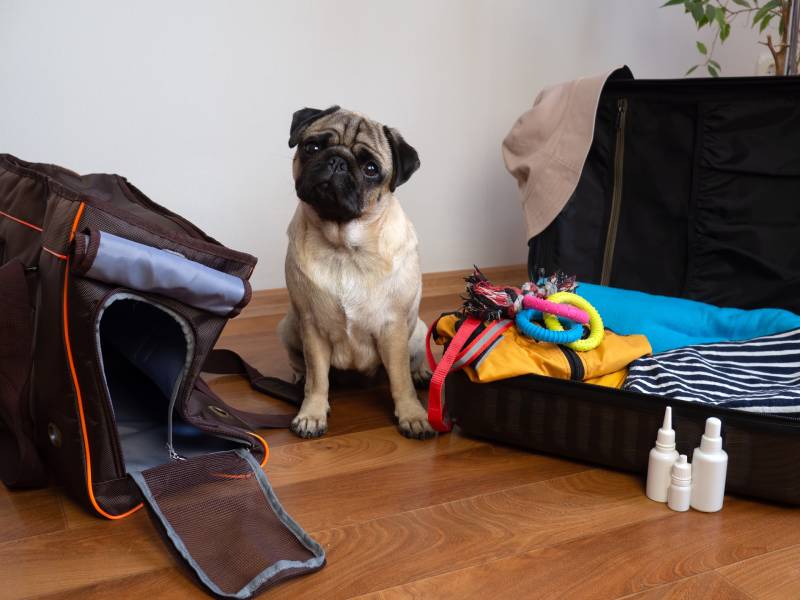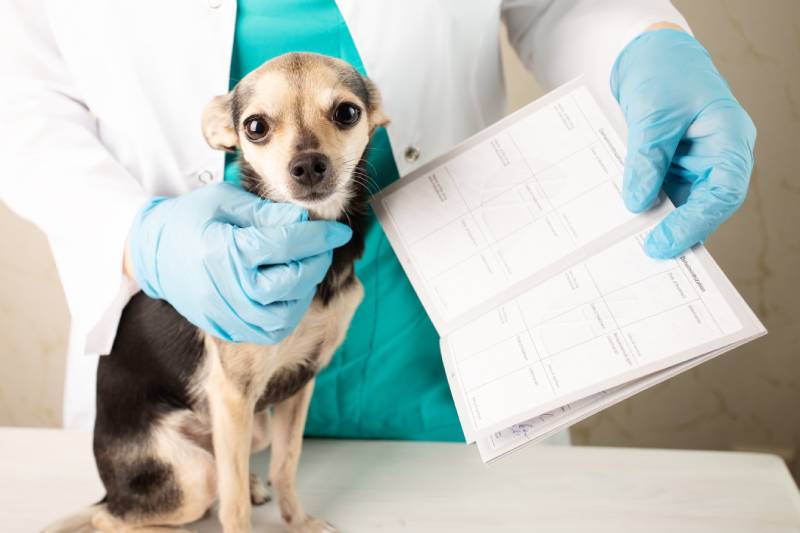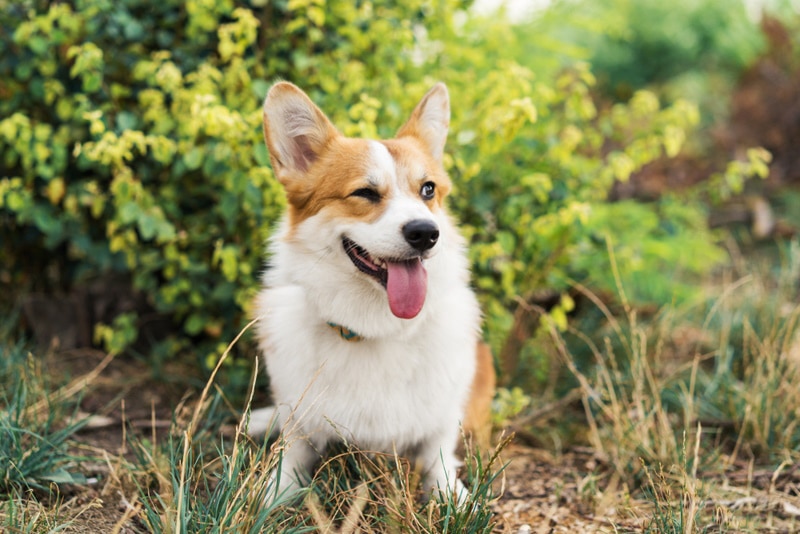What to Pack for Dog Boarding: 9 Essential Supplies
Updated on

Boarding your dog can be stressful for both of you, and it’s easy to forget to send everything your dog might need. Nobody wants to be in the middle of their flight to their vacation destination when they remember that they forgot to send something important with their dog. When you set up a boarding reservation for your dog, make sure to check with the facility about anything they might require during boarding.
The 9 Essential Supplies for Dog Boarding
1. Necessary Documents
The boarding facility your dog will be staying at will likely have a set of required documents they’ll want you to provide. You will likely need to provide a copy of your dog’s vaccination records, microchip records, spay/neuter records, and any pertinent medical history.

2. Emergency Contact Information
Many of us think of our dogs like they’re our children, and when your dog goes to stay somewhere, you should do exactly what you would do for a child—leave emergency contact information.
It’s a good idea to provide two separate contacts, just in case something happens to someone’s phone. You may consider providing contact information for yourself and for someone who will be in the same town as your dog so they can serve as your proxy if you aren’t available. Provide the contact information for your vet as well so the facility will know exactly who to reach out to with medical concerns.
3. Food
Ideally, you should pack food for your dog if allowed. Dogs can have sensitive stomachs, and sudden dietary changes can lead to diarrhea and vomiting. Some dogs may experience stomach upset while boarding due to the stress of being away from home, but sending your dog with their own food will lessen the likelihood that digestive problems will occur.
It will also help to maintain your dog’s normal routine. If they’re eating a familiar food that they like, it may provide them with some comfort and normalcy in an abnormal situation. It’s a good idea to pack your dog’s meals in pre-portioned, individual baggies so there’s no question about how much food they should receive.
You should also plan to send at least a few meals’ worth of extra food. Things can happen with travel, and because there’s always a chance of a delayed flight or flat tire, providing your dog with extra food will keep them covered if you don’t make it back when you thought you would.

4. Medications and Supplements
Even if your dog is boarding at a veterinary facility, bringing your dogs medications is still a good idea. Pack the medications and supplements in bottles or bags that are clearly marked with your dog’s name and exactly what the item is. Provide written instructions for when and how these items should be administered. Don’t forget to include anything that your dog may need to take while you’re gone, like their once-monthly heartworm medication.
5. Favorite Treats
Everyone loves a tasty treat, including your dog. Sending your dog with some of their favorite treats can help provide them comfort and routine during their boarding stay.
Avoid sending chews that are intended to last for a long time, like rawhides and bones. These items should not be given without supervision, and the boarding staff will likely not have enough time to monitor your dog when they’re chewing on something. Edible treats are ideal to send with your dog but try to keep things simple. Don’t send treats that require special storage since this will just make things more complicated for the staff.

6. Something That Smells Like Home
There are multiple types of items you can send with your dog to provide them comfort. They may be particularly attached to a certain dog bed or blanket, but something as simple as a t-shirt that smells like you can make things less stressful for your dog during their boarding stay.
Don’t send anything that you don’t want to risk being ruined, though. Boarding facilities often wash bedding daily, so there’s a good chance that whatever you send will go through an industrial washing and drying cycle multiple times before it gets back to your house.
7. A Leash
A leash is a good thing to plan for, but it may not be required by every facility. Some places like to limit the number of leashes and collars they keep so nothing gets lost or mixed up, so check with the facility before planning to bring a leash.
Regardless, you should be prepared to walk your dog into and out of the facility on a leash for their safety and the safety of other dogs in the facility.

8. Identification
It’s important to have current identification on your dog. This will ideally be a microchip, but can also be an ID tag on their collar. Whichever the case, make sure your information is current so that you can be contacted should your pup happen to get out or get lost while at the boarding facility.
9. Extras
As previously mentioned, you need to send your dog with extra food. In fact, it’s important that you send them with extras of everything they might need during their stay. Medications, supplements, and treats should also be provided in larger quantities than your dog needs during their planned stay. Make sure to tell the facility that you’ve provided them with extras, just in case. You never know what might happen with your trip, so setting your dog up for a comfortable and safe extended stay in case you get stranded will keep them feeling safe and calm.
Conclusion
Check with the facility that your dog will be boarding at to see what items they require and allow. Some facilities may not accept leashes, collars, toys, or even bedding, since they don’t want to risk your items going missing or getting ruined. If necessary, tell them what items you intend to bring with your dog. That will allow them to let you know if they have restrictions or rules surrounding any of the items you’re packing.
You Might Also Like:
Featured Image Credit: Yekatseryna Netuk, Shutterstock












